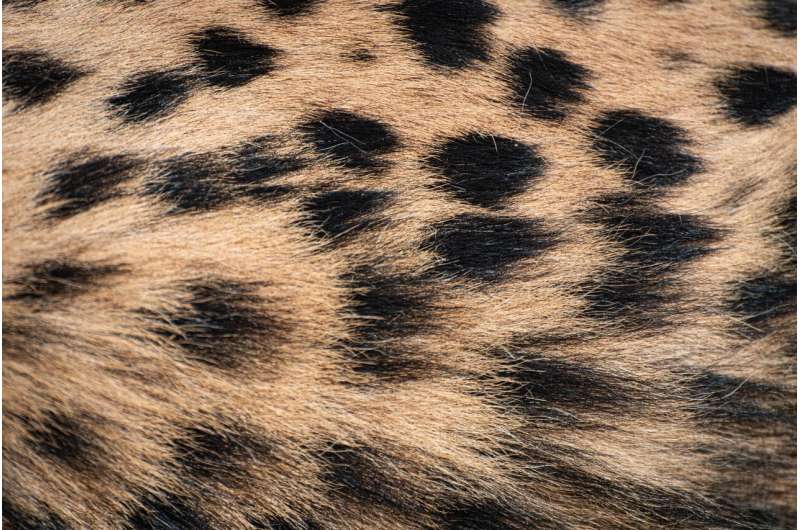Hair in "stress": analyse with care

Similar to humans, wild animals' reaction to disturbance is accompanied by releasing hormones, including cortisol. To understand the impact of various stress factors on wildlife—for example, competition for food, encounters with predators, or changing environmental conditions—scientists first need to determine the baseline levels of relevant hormones for each species.
Researchers from the Leibniz Institute for Zoo and Wildlife Research (Leibniz-IZW) now report possible pitfalls of the commonly used hormone analysis method that overestimate concentrations of cortisol, and thus lead to overstated conclusions. They investigated whether glucocorticoid hormones deposited in animal hair can be reliable biomarkers to indicate the impact of disturbances. The source of errors in the commonly used antibody-based enzyme immunoassays (EIA) method is described in a recently published article in the scientific journal Conservation Physiology.
Scientists led by Prof. Katarina Jewgenow, head of the Department of Reproduction Biology at Leibniz-IZW, conducted a comparative analysis on the hair samples from six mammalian species: Egyptian mongoose (Herpestes ichneumon), Iberian lynx (Lynx pardinus), cheetah (Acinonyx jubatus), spotted hyena (Crocuta crocuta), Asiatic black bear (Ursus thibetanus), and Alpine marmot (Marmota marmota). They measured the concentration of the stress hormone cortisol in hair extracts using the widely applied method of antibody-based enzyme immunoassays (EIA).
This method is based on the ability of an antibody to recognize a three-dimensional molecule structure specific to a particular hormone. Such antibodies will also bind to closely related molecules which express similar structures. Usually, such group-specific antibodies are useful for wildlife species when the relevant stress hormone is unknown—but it also means that the concentration of other substances might be measured that are irrelevant to the biological process under observation, in the case of stress hormones such as cortisol, the reaction to a stressful situation.
To be certain that the natural hormone was extracted from mammalian hair, the researchers compared the EIA results to a more comprehensive and precise procedure, a mass spectrometry analysis. They discovered significant discrepancies in the indicated hormone levels. The EIA overestimated the concentration of cortisol by up to 10 times. Further biochemical analysis showed that this overestimate was not connected with any substance related to cortisol, but rather to unknown hair born molecules. For that reason, they strongly recommend a careful validation of each EIA before using it to the analysis of hormones from hair samples. As it is already known that age, sex and time of the year might influence baseline hair cortisol level, information about the age and sex of the individual and the sampling date should also be available.
In a previous study, Leibniz-IZW doctoral student Alexandre Azevedo analysed hair samples of Egyptian mongooses (Herpestes ichneumon) from seven provinces of Portugal. He and his colleagues wanted to know whether the successful reintroduction of the Iberian lynx to Portugal is a stressful influence on the mongoose population as the Iberian lynx is a direct food competitor to the mongoose, but lacked a suitable method.
Collecting hair samples is frequently suggested as a non-invasive way of assessing stress levels as they can be collected without disturbing the animal. "Taking blood samples to measure cortisol concentrations in the serum itself causes considerable stress. Cortisol metabolites can also be detected in faeces, but finding out which individual defecated is quite complicated in free-ranging animals unless the defecation was actually witnessed by the observer," says Jewgenow. "In contrast, hair samples are often obtained in a minimally invasive way using 'hair-traps,' which are usually installed to collect samples for genetic analyses from wildlife population." Now, such samples can also be used to determine the concentration of cortisol in hair provided the analytical method has been previously validated.
More information: Katarina Jewgenow et al. Hair cortisol analyses in different mammal species: choosing the wrong assay may lead to erroneous results, Conservation Physiology (2020). DOI: 10.1093/conphys/coaa009

















